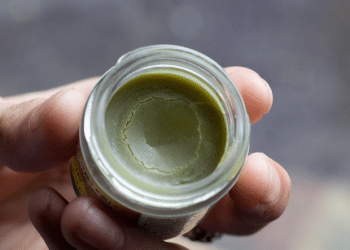Live resin and live rosin sound very similar, and to a certain extent, they are.
Why Live?
The “live” in their name refers to their source material, which is freshly frozen after harvest as opposed to dried and cured. This is done to preserve the buds as intact and fresh as possible by circumventing the drying and curing stages, which can take a toll on their cannabinoid profile.
But the similarities between live resin and live rosin end here.
Live Resin VS Live Rosin
The most fundamental difference between live resin and live rosin is that the first is solvent-based, whereas the second one is solventless.
Complex, Innovative Science VS Artisanal Simplicity
Producing live resin involves a light hydrocarbon solvent, such as butane or propane, and respectively a purging phase to remove any residue. The solvents are highly flammable and the equipment complex and expensive, so producing live resin is a high-stake game that requires some serious know-how.
Live rosin, on the other hand, is much simpler and artisanal in nature, which also makes it much safer for both consumers and manufacturers. No risk of solvent residue in the final product, no risk of accidental explosions during the process.
Live rosin is achieved in a couple of steps. First, the frozen source material is made into bubble hash, which is basically filtered kief, extracted by grinding the frozen cannabis with ice in a washing machine or even a salad spinner, agitating the material and causing the trichomes to fall off, which are then collected in filter bags of varying sizes.
Then, the trichomes are placed in a rosin press as if they were the contents of a sandwich and the rosin press is the bread. The rosin press applies heat and pressure, squeezing the trichomes and squeezing out the rosin. And by rosin press, we mean even a hair straightener.
Large Batches VS Exclusivity
The equipment, necessary for making live resin, is complex and requires a serious investment. But on the plus side, it’s much faster and offers major possibilities for scaling up and respectively bringing the prices down.
On the other hand, live rosin is the embodiment of the DIY movement, as it can be made safely with appliances many people use in their everyday lives. However, simpler equipment usually entails manual labor and a slower process, which respectively means more hours of work that the end customer needs to pay for.
Bottom Line
In other words, if live resin and live rosin were food, the first would be sold in supermarkets, whereas you’d find the latter in farmers’ markets. And there are fans of both, for good reason.
Image Credits: Wikimedia Commons












